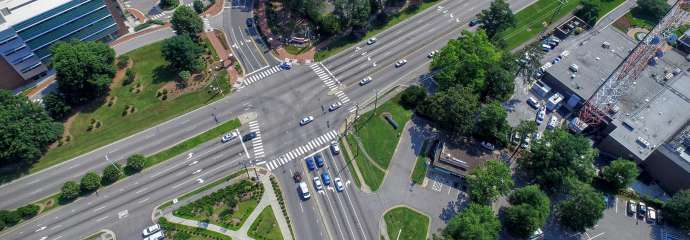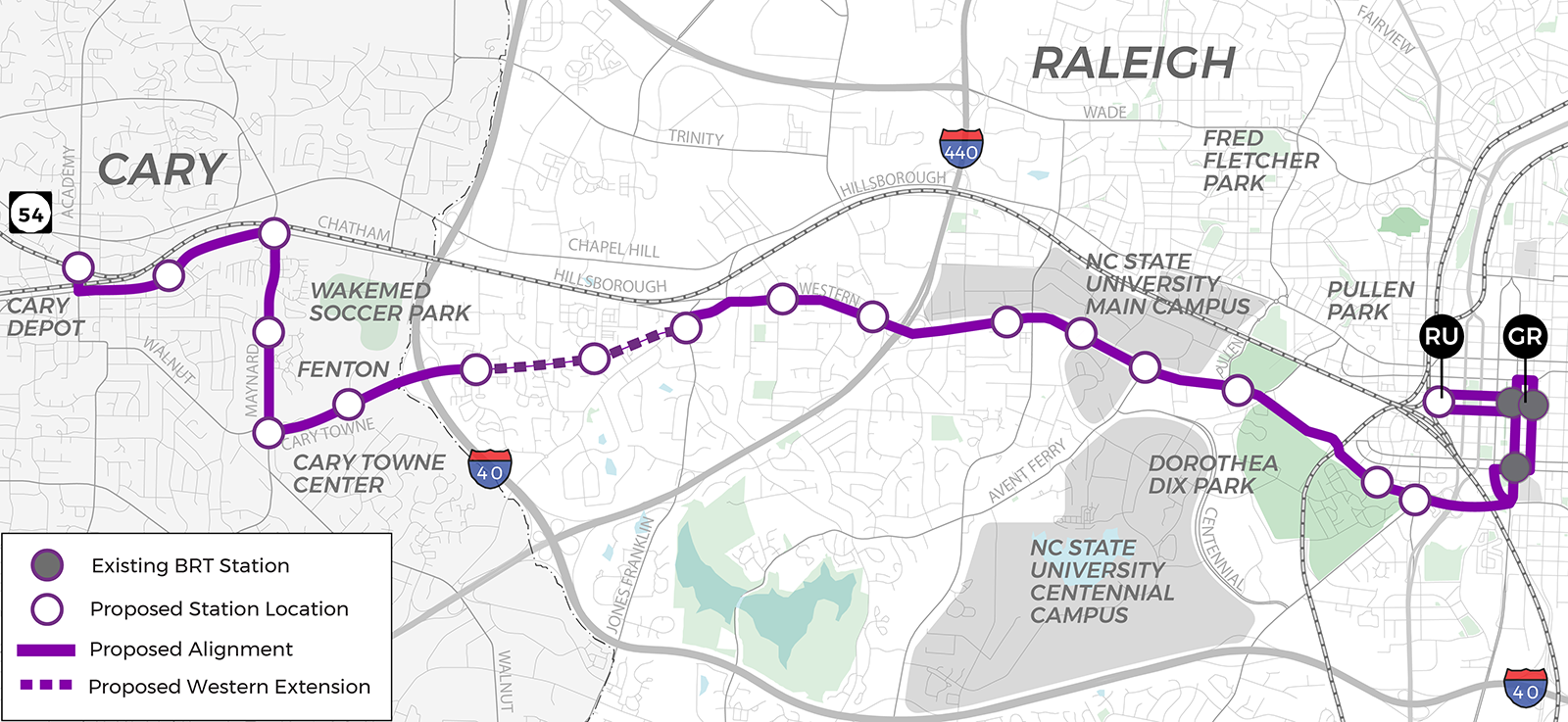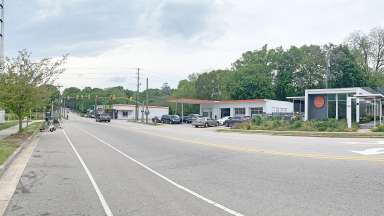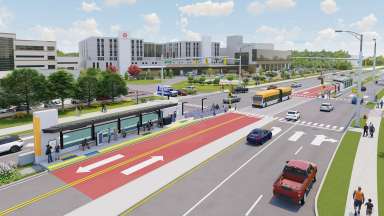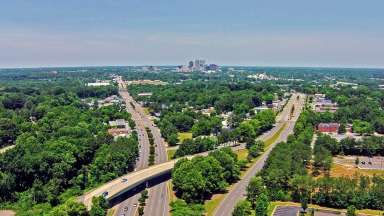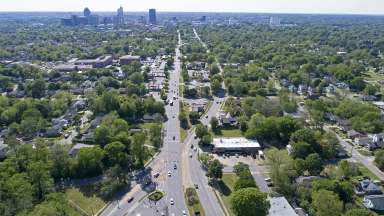Transit is a means of connecting people with opportunity. It is also a tool for improving sustainability. In a growing city like Raleigh, transit helps people get around in a way that is affordable, supports walkability, and reduces carbon emissions.
Making the most of a transit investment means thinking about how to grow around transit. Station area planning is the process of planning for future bus rapid transit (BRT) stations. It involves planning for where people will walk and bike to transit and how the areas around Bus Rapid Transit (BRT) stations can grow to support healthy and affordable neighborhoods.
This process is separate from the design of the Western BRT stations and bus lanes. It is a community planning process for areas within a short walk of the BRT stations along Western Boulevard but not for the BRT route itself.
The Western Station Area Planning Options & Concept Survey closed on April 22, 2024. View the survey results.
